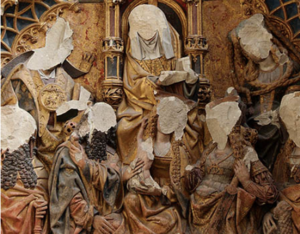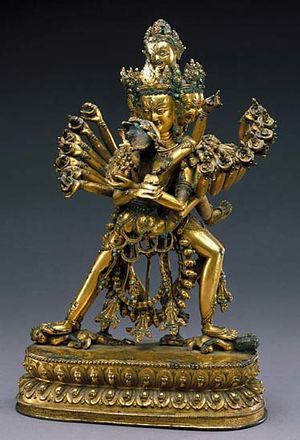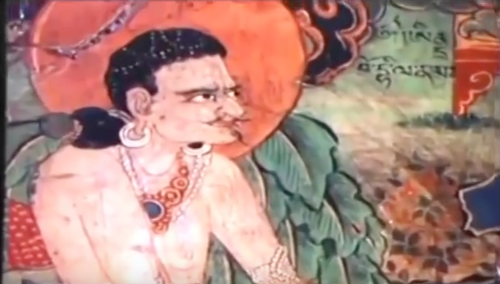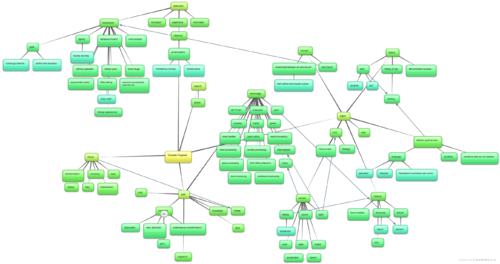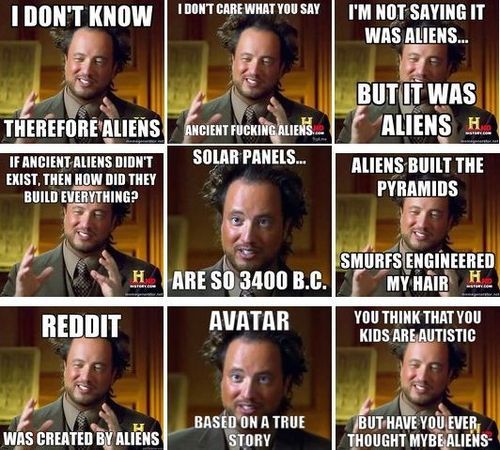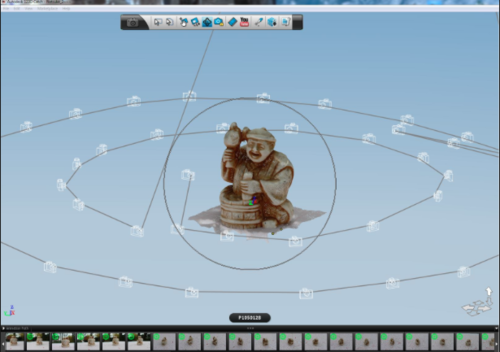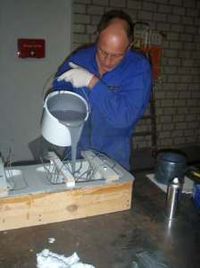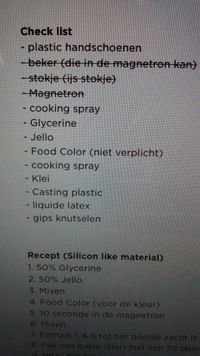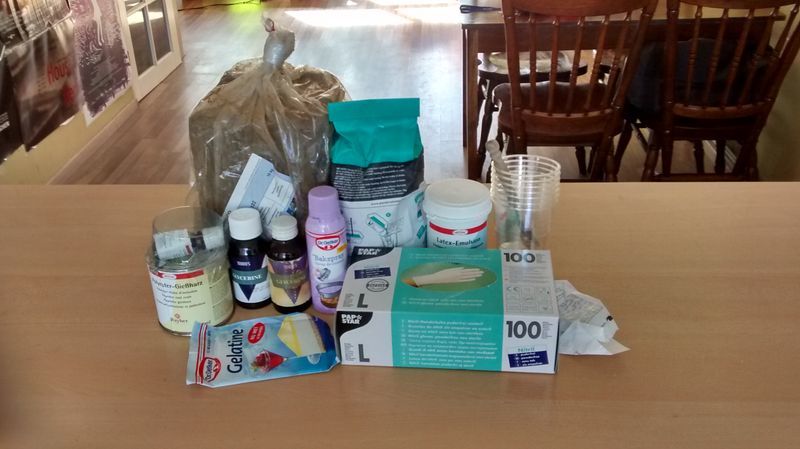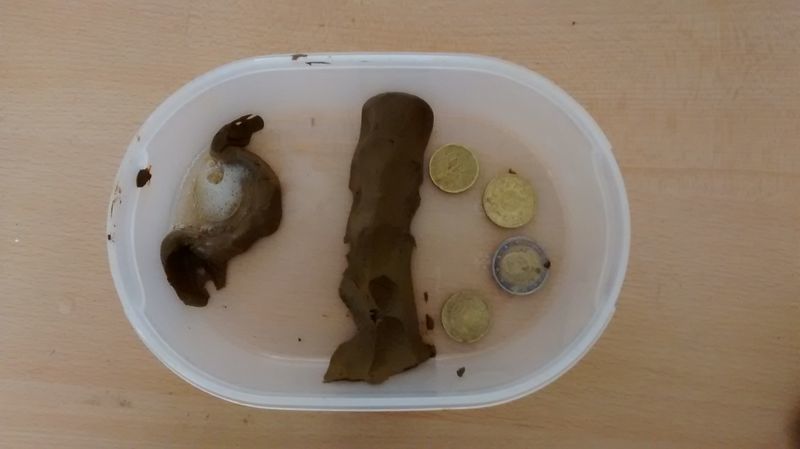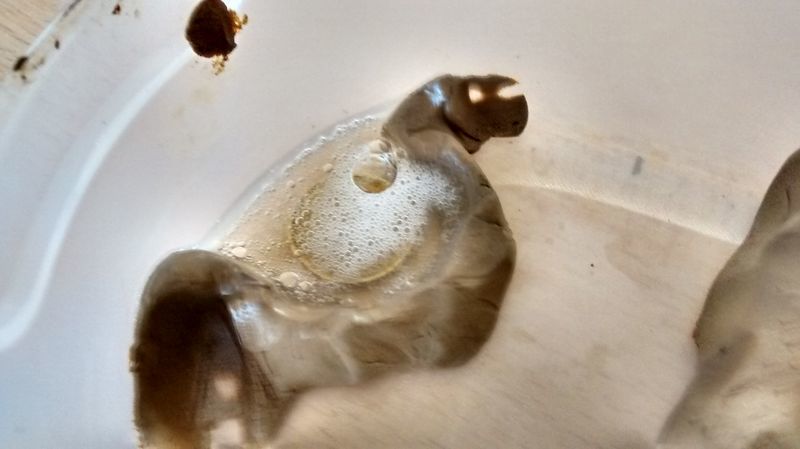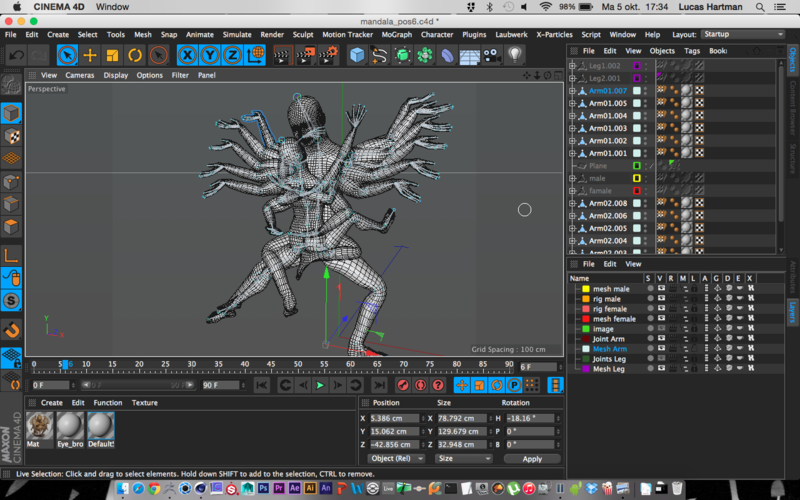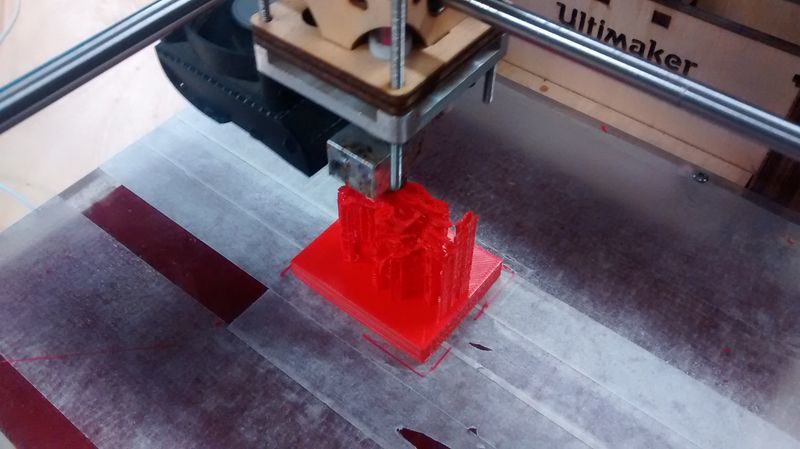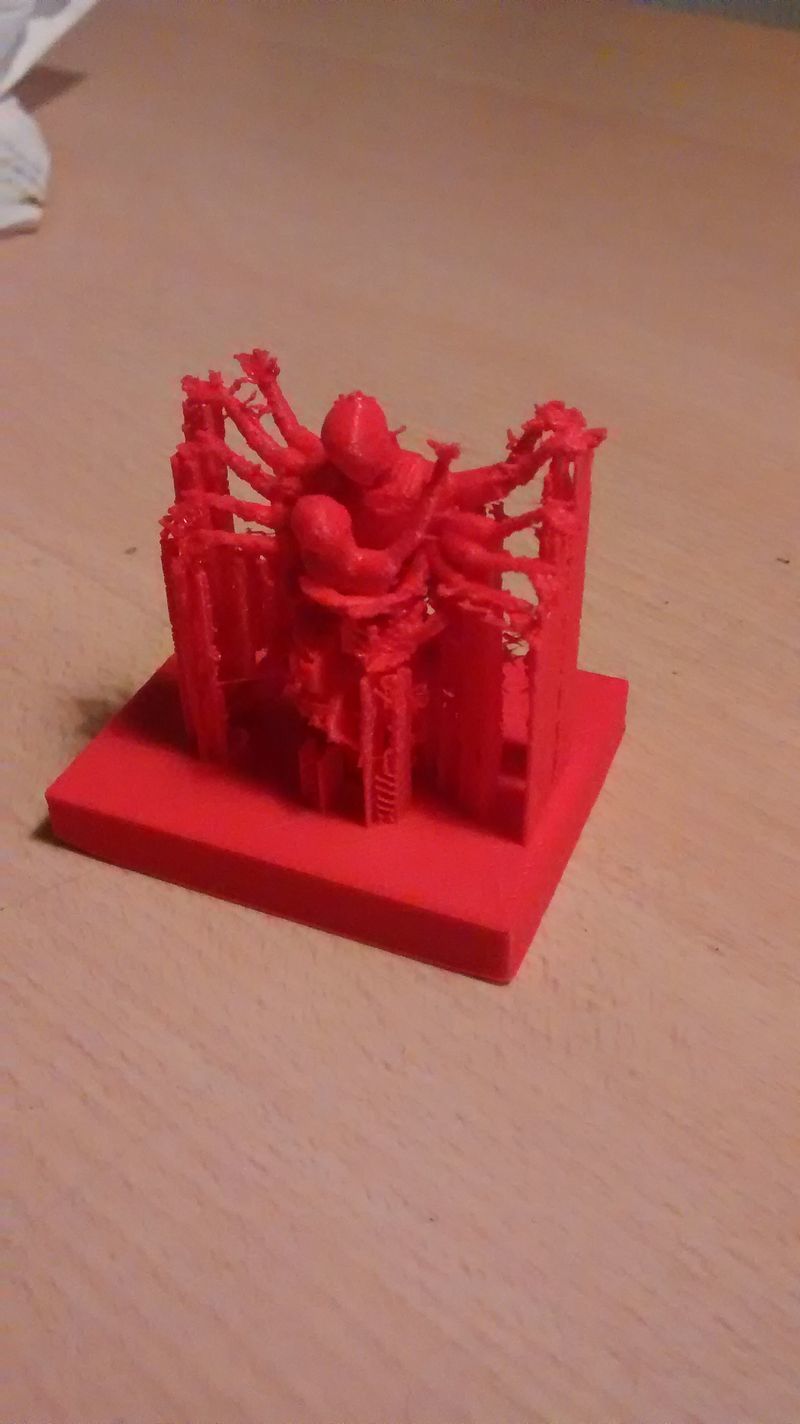Difference between revisions of "User:Lucashartman"
Lucashartman (talk | contribs) |
Lucashartman (talk | contribs) |
||
| Line 253: | Line 253: | ||
| − | + | ====Creativity without limits==== | |
| − | |||
| − | |||
| − | |||
| − | |||
| − | - | + | |
| − | + | What if dream can appear right in front of us, what are the tools to make that possible? How can be creative without no more limit. Or do we need limits to be creative? | |
| + | |||
| + | Born 1990’s I grow up in a time the century was ended and the new millennia was just around the corner. Every body was looking forward to the future one better, beautiful, and more advanced. I lot of media focus on this idea, | ||
| + | and so science fiction was very compelling for movie, series and gaming. | ||
| + | Having access to the Internet I had the freedom to look for these visuals, stories and ideas. These visuals were often created by “Computer-generated imagery” (CGI) and so this is where my interest for CGI started. | ||
| + | |||
| + | I studied “Interactive Design” at Sint Lucas and continued my studies at WDKA, the department of “Animation”. Most of my studies I work with CGI. | ||
| + | CGI for me is where science and creativity merge together. It’s a recently new industry vastly chancing, and shows potation for any kind of industry: medical, science, economic, food, adverting, entertainment and technical industry. | ||
| + | |||
| + | In my studies I learn to tools and the creative process for making CGI I grow up to love. The process is key and every CG artist got a different one. | ||
| + | The workflow depends on the tools and project. In between projects its important to try out new technologies, especially if you want to keep up with the industry. Often watching tutorials and looking out over the forums & blogs, helps to keep up with this fast growing industry. | ||
| + | |||
| + | The tools are very diverse, for every problem are one or more solutions. | ||
| + | The things you can create is almost limitless: form, movement, simulating light, liquid, dynamics, scripting, 3Dprinting, render, compositing and so on. | ||
| + | It depends on your interests, skill and carries to know which tools and tech. to use. For example a freelance animator would use a programme like Cinema4D. | ||
| + | A tool with fast possibilities for creating all different kinds of CGI. | ||
| + | But for a scientist Maya would by a better option. The programmes have equally the same tools, so what’s the differents? The Difference is that Cinema4D is easy to use if you want to simulate something for a commercial or shot film. Maya can do that two put, there are more step to involved. This will help if you want to create a more realistic and accrete result. | ||
| + | Often this is what a lot of CG artist are looking for realism. New tech. pushes the limits. The better the result the more people will get imagers in to the experience. In the meanwhile artist experiments with new tech, but with the purpose to create a totally different result. One that’s different from what the tools where meant for. | ||
| + | For example in the 1970's there was “Telethon” its called the internet before the internet: Created by the Canadian government, Telethon send Computer Graphics from serves thought the phone cable to a terminal connected to the TV. It was meant for people to do banking, do shopping or find some one to hook up with, al with digital graphics. When artist picked it up they made weird computer art. Moving shapes and colours never scene before. In 1985 funding was cut for Telethon research programs and so was the art. | ||
| + | |||
| + | The assigns of CGI is bringing your thoughts and dreams in to the real world, just like drawing, painting, sculpture or any thing else did. Often as real as possible, but it can also be abstract like the Telethon artist made. We want it to interact with us. It shows us the things we want or to understand, right in front of us. | ||
| + | The difference with back then and know, is that we can create stuff with almost know limit. And why is this possible compared with other craft? | ||
| + | Its because CGI is very involved with science. | ||
| + | Every year a conference called “SIGGRAPH” (short for Special Interest Group on Graphics and Interactive Techniques) is the annual conference on computer graphics (CG). Dozens of research papers are presented each year, and SIGGRAPH is widely considered the most prestigious forum for the publication of computer graphics research. In 1984, under LucasFilm Computer Group, John Lasseter's first computer animated short, The Adventures of André & Wally B., premiered at SIGGRAPH. Pixar's first computer animated short, Luxo, Jr. debuted in 1986. Pixar has debuted numerous shorts at the conference since. | ||
| + | |||
| + | So where are we heading to, what is the future of CGI? 2015 is almost over and the only thing people are talking about is VR short for “Virtual Reality”. Instead sitting comfortable in front of your TV, your vision getting immured in to a digital environment. | ||
| + | |||
| + | Next year a consumer version will be released and more CG artist will discourse numberless opportunities to create something different. For example a research in VR for medical use put a VR headgear on a patient with severe burn wounds. The patient would see a ice cold environment. The brain thought that it was getting colder. The result was that the patient’s wounds hurt lesser by 80%. This is even more than the medication that only reduced the pain by 40%. You can only imagine what this technology can influence in the near future, but I believe this will only a milestone for the next face. After we understand VR, AR (Augmented Reality) will be adapted by the masses. And what this will mean is that the virtual reality will be placed over the real world. CGI wound be stuck on your screen, but can move freely in physical space. It’s been called the “Internet of Thing”, a new set of protocols infusing every part of are life. | ||
| + | When that happens I can only thing of the science fiction movie I used to watch as a child. Maybe a chip in your brain, showing the visuals through your eyes. Humans will become more machine, or is technology becoming more bionic? | ||
| + | At a given moment we can’t tell. | ||
| + | My place in this is keep adapting new tools and tech. so I can create something never seen before, for people to experience something never seen before. | ||
Revision as of 19:05, 11 October 2015
Contents
Museum Of Fantastic Forgeries
Theme
Fantastic Forgeries presents alternate histories of Dutch material culture through the research and evaluation of existing artefacts – and their appropriation, transformation and remaking. Fantastic Forgeries uses historical crafted objects as a departure point to reflect on the status and practice of craft in our contemporary society. The objects will be used as tools to examine traditional ways of making as well as a formal, tactile, and decorative inspiration to compare when stretching the boundaries of digital fabrication.
In this quarter you will explore into the rich past of Dutch material culture though the Applied Arts and Design collection of the museum Boijmans van Beuningen. You will choose an artefact that speaks to you through its form, function, and its surrounding folklore. You will experiment with various and scanning, modelling and production technologies in order to support the crafting of your own perfect copy of your chosen piece. The idea is to make your replica or 'fake' as convincing as possible by reproducing every detail, before breaking it open into a series of iterations that alter the form and content of the artefact. Can new rituals come about by removing the form out of its original context? Can more and flamboyant objects arise by imagining and inventing the aristocrats that would use them?
Stappen
1. kies een kunstwerk uit een museum, en scan dit (methoden naar keuse)
2. Transformeer dit object (op basis van techniek, materiaal, betekenis, functie of verleden)
3. maak een verslag op de WIKI
4. 1000 woorden statement over, craft, in relatie met techniek
5. expositie, presentatie, onderzoek visualisatie (deadline)
Eisen
1. Reflect op de punten van kennis, en skills
2. connect project met de praktijk van ambacht en technologie
3. Student heeft kennis over de geschiedenis van het project thema
4. Student kan zijn eigen onderzoek methoden formuleren, en moet duidelijks zijn in het proces en design
5. De student experimenteert en laat dit zien in het proces
6. De student produceert een origineel en innovatie ontwerp
7. Student maakt gebruik van technische instructie en technologieën / gereedschappen
8. De student heeft een gemotiveerde keuze en een goede verdediging voor een specifiek een technologie in hun uitvoering van hun afstudeeropdracht.
Aantekeningen
- Dit is een verhaal dat opnieuw word verteld, met een aantal variaties.
- Met de zelfde zinnen, maar een ander punt
- Meer of minder brengt je altijd naar een verder punt
- Van elke verschillend kijk punt, is een ander landschap te zien
- Een van de manieren om langs de beperkingen van identiteit te komen,
is om met iemands woorden te gebruiken. De taal die anderen gebruiken.
- Dit is de verleiding van vertalen.
- Het schrijven van commentaar of aantekeningen, over verzonnen verhalen. Inplaats van het uitleggen van een idee in 500 pagina's. Maar de verbale verkenningen speelt af in een paar minuten duurt. Acteert of dat het boek af geschreven wat vanuit een andere taal cirkel Als of het je ogen wilt laten geloven, om de hypefatical boek te tonen.
- Interpreteren van andere mans problemen van een discipline, in voorwaarden van zijn eigen.
- Het combineren van set variabelen van een situatie, renausing de order voorkeur van alle organisaties
- Een schip die terug komt bij zijn bestemming naar tijden, met al zijn onderdelen vervangen, door meerdere reparaties
- Als je water schenkt in een kop, dan word het water de kop, je stop water in een beker, de water wordt de beker. Water kan vloeien maar ook botsen.
- Stellage is een symbol van iets dat gebouwd of verwoest wordt.
- Ruwines vertoont de verhevenheid, dat het gebouw door tijd niet heeft behouden
- Huis nummers veranderen dagelijks, zodat niemand zijn weg naar huis kan vinden.
- Voor elke sculptuur die gemaakt word, zijn er meerde variaties die niet gerealiseerd worden.
- De hoeveelheid boeken die er gemaakt zijn is minder dan de hoeveelheid boeken die niet bestaan.
- Dialoog verlengt in beide richtingen, de dialoog van het werk is net zo geallieerd als de voorgaande is.
- Elk woord heeft een geschiedenis van gebruik, waar het op reageert en anticipeert een toekomstige reactie.
- Ik heb alleen maar tekeningen gezien van deze tekening. Het leegt zich zelf van mening, om te acteren als een generatieve ruimte van de compilatie.
- De meer het bekent, de meer het is ingeschreven. Net als co-productie, indeling aanpassing helpt bij het produceren van risico en onderzekerheid. In dit geval om met een format te werken die gedemonstreerd succes heeft.
- De beste imitators zijn de genen die we niet herkennen.
- Er is daar geen daar. extatische en taalkundige toepassingen bewegen langs dichotomisch, naar een staat waar de conditie van een woord. Als een fanatiek deeltje en een semantisch golf, die bestaat op het zelfde moment in tijd.
- Dynamische attribuut is geen eigendom van het object of de meting apparaat die afzonderlijk word genomen. Maar zijn de eigendom tussen object en apparaat
Source: Versions Video Interview Oliverlaric
Kunst object
Afdeling
boeddhisme
Kunstenaar
onbekend
Titel
mandala van Kapala-Hevajra
Datering
Tibet, 15de tot 16de eeuw
Verwervingsinformatie
sinds 2010 in langdurig bruikleen van de Bodhimanda stichting
Materiaal
koper
Afmetingen
hoogte 28 cm, diameter 26,5 cm
Depotnummer
V-308
Gastconservator en Tibet-deskundige Erik Bruijn koos deze eeuwenoude mandala uit voor Trouw, omdat hij zo zeldzaam is en nog helemaal gaaf. Wereldwijd bestaan er maar een paar van. Hij is gemaakt van koper volgens de 'verloren wasvorm'. Dat is een methode waarbij het object eerst tot in detail in was wordt gemodelleerd op een kern van klei, en daarna gegoten. Bij de afwerking is de mandala verguld.
Het is een prachtig object, vol symboliek. Maar veel mensen zullen geen idee hebben wat de betekenis ervan is en wat al die figuurtjes voorstellen.
mandala's: de belangrijkste symbolen voor de relatie tussen de mens en de kosmos. Ze bestaan er in allerlei soorten, van eenvoudige geometrische diagrammen, meer uitgewerkte schilderingen op doek en ingewikkelde patronen van gekleurd zand,tot reusachtige driedimensionale structuren zoals de monumentale Borobudur op Java. "Deze cirkelvormige, driedimensionale mandala is extreem zeldzaam. Hij symboliseert zowel de microkosmos van de binnenwereld als de macrokosmos van de buitenwereld." Het godenpaar dat in het hart van de mandala staat, belichaamt de axis mundi, het denkbeeldige middelpunt van het universum. De god die hier is afgebeeld, is de almachtige Kapala-Hevajra. In een innige verstrengeling met zijn gezellin Nairatmya onderwerpt hij, woest dansend, het kwaad. Bruijn: "De seksuele vereniging van Hevajra met Nairatmya staat symbool voor de allerhoogste gelukzaligheid, de unio mystica: het samensmelten van de vrouwelijke wijsheid met het mannelijke mededogen."
de acht naakte godinnen die in mandalavorm rond het godenpaar dansen. Het zijn dakini's, engelen die verschijnen om met hun kracht en schoonheid beoefenaars van yoga aan te moedigen op het pad naar de Verlichting. Ze worden ook wel hemelse danseressen genoemd, omdat ze de verlichte energie belichamen die overal in de ruimte werkzaam is. Dat ze naakt zijn, op hun sieraden na, symboliseert hun totale openheid en absolute vrijheid.
Als je nog wat langer kijkt, ontdek je dat de danseressen minder engelachtig zijn dan ze er op het eerste gezicht uitzien. Ze hebben allemaal een wapen in de hand, een gekromd mes, een bijl, een vangstrik.
Bruijn: "Die wapens verwijzen naar de hindernissen die op het geestelijke pad overwonnen moeten worden en de krachten die yogi in hun eigen lichaam moeten activeren. Die krachten verplaatsen zich via de acht energiebanen die van het hart uitwaaieren naar alle delen van het lichaam." Dit mystieke hart is het zogenoemde 'hartchakra', dat als een achtbladige lotusbloem wordt voorgesteld.
Als je goed kijkt naar Kapala-Hevajra, gaat het een beetje duizelen voor de ogen. Deze godheid heeft acht hoofden met in totaal vierentwintig ogen, zestien armen en vier benen. En dan is er nog veel meer te zien. Zo houden zijn handen elk een schedelkom vast met daarin goden en dieren. Om zijn nek draagt hij een halsketting van gesnelde hoofden. En dan zijn er nog de vijf doodskoppen op zijn kroon. Bruijn: "Het is een waanzinnig complex beeld, dat in een notendop de hele boeddhistische filosofie verklaart."
Source: trouw.nl
Yogis try to achieve enlightenment, or highst form of consciousness (not only to learn but to expirience)
Core reason of Buddhism= finding knowledge, health and happiness
Source: Tibetan Buddhism | Yogis Of Tibet
Mindmap
Example Fantastic Forgeries
Ancient Astronauts
Quote: "This is a story that is retold , with some variations. With the same sentences, but a different point. "
Ancient Aliens
Ancient Aliens is an American television documentary serie, on the History channel. The program presents hypotheses of ancient astronauts and proposes that historical texts, archaeology, and legends contain evidence of past human-extraterrestrial contact. The show has been criticized for presenting pseudoscience and pseudo history.
Scan and production methods
Scan
Modelen
casting (gieten)
Proces
Production
1000 Word Essay
Creativity without limits
What if dream can appear right in front of us, what are the tools to make that possible? How can be creative without no more limit. Or do we need limits to be creative?
Born 1990’s I grow up in a time the century was ended and the new millennia was just around the corner. Every body was looking forward to the future one better, beautiful, and more advanced. I lot of media focus on this idea, and so science fiction was very compelling for movie, series and gaming. Having access to the Internet I had the freedom to look for these visuals, stories and ideas. These visuals were often created by “Computer-generated imagery” (CGI) and so this is where my interest for CGI started.
I studied “Interactive Design” at Sint Lucas and continued my studies at WDKA, the department of “Animation”. Most of my studies I work with CGI. CGI for me is where science and creativity merge together. It’s a recently new industry vastly chancing, and shows potation for any kind of industry: medical, science, economic, food, adverting, entertainment and technical industry.
In my studies I learn to tools and the creative process for making CGI I grow up to love. The process is key and every CG artist got a different one. The workflow depends on the tools and project. In between projects its important to try out new technologies, especially if you want to keep up with the industry. Often watching tutorials and looking out over the forums & blogs, helps to keep up with this fast growing industry.
The tools are very diverse, for every problem are one or more solutions. The things you can create is almost limitless: form, movement, simulating light, liquid, dynamics, scripting, 3Dprinting, render, compositing and so on. It depends on your interests, skill and carries to know which tools and tech. to use. For example a freelance animator would use a programme like Cinema4D. A tool with fast possibilities for creating all different kinds of CGI. But for a scientist Maya would by a better option. The programmes have equally the same tools, so what’s the differents? The Difference is that Cinema4D is easy to use if you want to simulate something for a commercial or shot film. Maya can do that two put, there are more step to involved. This will help if you want to create a more realistic and accrete result. Often this is what a lot of CG artist are looking for realism. New tech. pushes the limits. The better the result the more people will get imagers in to the experience. In the meanwhile artist experiments with new tech, but with the purpose to create a totally different result. One that’s different from what the tools where meant for. For example in the 1970's there was “Telethon” its called the internet before the internet: Created by the Canadian government, Telethon send Computer Graphics from serves thought the phone cable to a terminal connected to the TV. It was meant for people to do banking, do shopping or find some one to hook up with, al with digital graphics. When artist picked it up they made weird computer art. Moving shapes and colours never scene before. In 1985 funding was cut for Telethon research programs and so was the art.
The assigns of CGI is bringing your thoughts and dreams in to the real world, just like drawing, painting, sculpture or any thing else did. Often as real as possible, but it can also be abstract like the Telethon artist made. We want it to interact with us. It shows us the things we want or to understand, right in front of us. The difference with back then and know, is that we can create stuff with almost know limit. And why is this possible compared with other craft? Its because CGI is very involved with science. Every year a conference called “SIGGRAPH” (short for Special Interest Group on Graphics and Interactive Techniques) is the annual conference on computer graphics (CG). Dozens of research papers are presented each year, and SIGGRAPH is widely considered the most prestigious forum for the publication of computer graphics research. In 1984, under LucasFilm Computer Group, John Lasseter's first computer animated short, The Adventures of André & Wally B., premiered at SIGGRAPH. Pixar's first computer animated short, Luxo, Jr. debuted in 1986. Pixar has debuted numerous shorts at the conference since.
So where are we heading to, what is the future of CGI? 2015 is almost over and the only thing people are talking about is VR short for “Virtual Reality”. Instead sitting comfortable in front of your TV, your vision getting immured in to a digital environment.
Next year a consumer version will be released and more CG artist will discourse numberless opportunities to create something different. For example a research in VR for medical use put a VR headgear on a patient with severe burn wounds. The patient would see a ice cold environment. The brain thought that it was getting colder. The result was that the patient’s wounds hurt lesser by 80%. This is even more than the medication that only reduced the pain by 40%. You can only imagine what this technology can influence in the near future, but I believe this will only a milestone for the next face. After we understand VR, AR (Augmented Reality) will be adapted by the masses. And what this will mean is that the virtual reality will be placed over the real world. CGI wound be stuck on your screen, but can move freely in physical space. It’s been called the “Internet of Thing”, a new set of protocols infusing every part of are life. When that happens I can only thing of the science fiction movie I used to watch as a child. Maybe a chip in your brain, showing the visuals through your eyes. Humans will become more machine, or is technology becoming more bionic? At a given moment we can’t tell. My place in this is keep adapting new tools and tech. so I can create something never seen before, for people to experience something never seen before.

